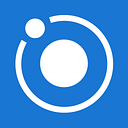2019 ABR Core Exam Update — NIS Skills Study Guide
Every year the ABR updates the Noninterpretive Skills (NIS) study guide that resident physicians use to study for the Core Exam. While the NIS guide has evolved heavily since its debut in 2013, the most substantial update to date was in the 2017-2018 cycle.
This latest update to the NIS Study Guide is possibly the most minor update ever. Nevertheless, we ran the document comparison to uncover the differences. Here’s what we found.
1. Chapters 1–3 are untouched.
The first three chapters are almost entirely unchanged, with the exception of a few scattered minor word rearrangements.
2. New chapter called “Core Concepts of Imaging Informatics”
Almost every section and subsection of the ToC is identical between 2018 and 2019. The exception is a new section called Core Concepts of Imaging Informatics. Despite its rigorous title, this new section is mostly a rundown of basic terms and concepts. There’s no discussion of deep learning or more general machine learning principles.
Each of the following terms is defined: DICOM, HL7, Ontologies, PACS, vendor-neutral archive (VNA), compression, downtime procedures. There is a brief description of recommended standards for monitors (section titled “Image Displays”).
A one-paragraph section on Ergonomics is surprisingly included in this new chapter, and the section lists the following repetitive stress injuries (RSI):
- carpal tunnel syndrome — involves the median nerve. Secondary to dorsiflexion of wrist while typing.
- cubital tunnel syndrome — involves the ulnar nerve. Secondary to RSI at wrist or elbow.
- DeQuervain tenosynovitis — RIS at the radial styloid. Inflammation of the extensor pollicis brevis and the abductor pollicis longus tendons. Note these two tendon names aren’t listed in the NIS guide, but you should probably know them as a radiologist.
A section on “Downtime Procedures” notes that “PACS is generally
expected to perform at “four nines,” or 99.99% uptime which translates to 50 minutes of downtime a year.” At least you’ll know what to demand of your PACS vendor.
A section on “Data Privacy and Security” draws the distinction between de-identification and anonymization:
- De-identification involves removing protected health information (PHI) and other identifying information in the images or metadata. A key may be used to recover the patient’s identity.
- Anonymization destroys the lookup key, so recovering the patient’s identity is impossible.
3. Statistics is still excluded from the NIS
Older versions of the Core Exam included questions about true positives, positive predictive value, and related topics. The new NIS continues to exclude these topics, and they won’t be asked on the Core Exam.
4. Updates to MRI safety on MR-Induced Burns
A new section on “MR-induced Burns” reminds you that RF pulses are the predominant source of tissue heating, quantified by specific absorption rate (SAR). Furthermore, RF pulses and switching magnetic field gradients can induce currents in metals and resistive heating, like with transdermal patches that contain aluminum, ECG leads, and large old tattoos. Even skin-to-skin contact, such as with the thighs and overhanging abdominal panniculus can result in burns, and separating padding can be used to protect the skin.
5. Updates to Gadolinium safety
The new NIS highlights on gadolinium-based contrast media (GBCM) include:
- MultiHance is specifically contraindicated for patients that have experienced allergy-like reactions to any Gadolinium-based contrast media.
- Prior reaction to iodinated contrast is a risk for Gadolinium allergy, but not any more so than a food allergy would increased risk of Gadolinium allergy.
- Avoid Gadolinium when eGFR<30 or in acute kidney injury (AKI)
- Highest risk agents for NSF are these linear GBCM agents: OptiMark, Omniscan, and Magnevist
6. Scattered edits for more precise language
There are several minor edits scattered throughout the document injecting more precise language or alternate phrasing.
7. Bottom Line
Be sure to study from the ABR NIS guide, rather than any review book, because the review books become quickly outdated since the NIS Guide has been changing each year.
Be sure to take notes in a way that you can run through them rapidly in the hours leading up to exam day. A non-randomized PowerPoint sequence works well for this.
If you’re attending Core Physics Live this year, there will be dedicated lectures packed with audience-polled MCQs specifically to address the NIS content, so you’ll be all set.
— Orbit Staff
